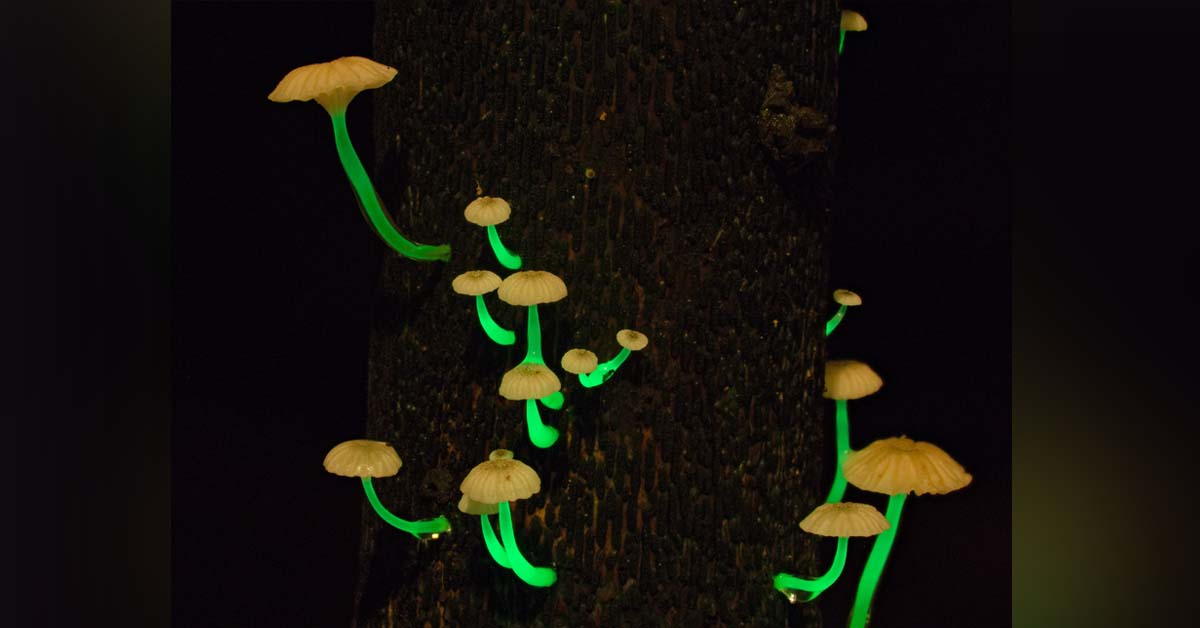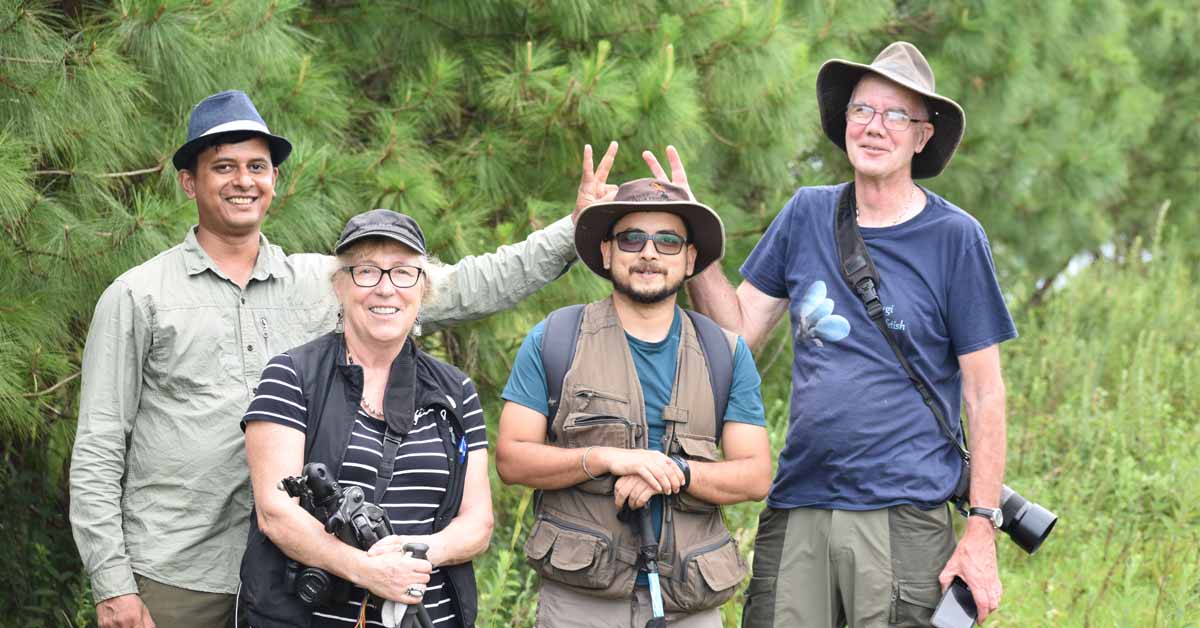
A new species of bioluminescent mushroom has been discovered in Meghalaya by a team of scientists from Balipara Foundation and Kunming Institute of Botany, Chinese Academy of Sciences.
The team did a fungal foray in the northeast to assess fungal biodiversity of the region.
During the assessment, Balipara Foundation documented over 600 fungal varieties with 34 species of fungi that are possibly new to science, including an extremely bright, luminous mushroom, which is very exciting.
According to reports, 97 species of bioluminescent fungi are known worldwide.
Due to its wide application in medicine, agriculture and ecological environment sensors, bioluminescent fungi have always received great attention.
The expedition team discovered a luminous fungus from dead bamboo stems in the bamboo forest of Meghalaya State in northeastern India.
Morphological characteristics and phylogenetic analysis showed that the bioluminescent fungus belongs to the genus Roridomyces and is a new species in science.
This is also the first report of Roridomyces in India.
The research results were published in the journal Phytotaxa under the title Roridomyces phyllostachydis (Agaricales, Mycenaceae), a new bioluminescent fungus from Northeast India.
"Based on the information we received from locals in Meghalaya, about a mushroom that glows at night, called as “electric mushroom” by the locals, we did multiple-night scouting in the forests of Meghalaya," says Gautam Baruah from Balipara Foundation research team.
"One fine night in the West Jayantia Hills districts on August 23, 2018, we discovered an amazing luminous mushroom with the help of locals," he added.
"We picked up some dead bamboo sticks and observed closely, the stripes of the tiny mushrooms on the bamboo were glowing in green," he continued.
"Steve prepared a small outdoor studio and took some wonderful pictures in the dark. By looking at the morphology of the mushroom we identified it preliminary as Mycena or Roridomyces," he further said.
The team sequenced the ITS gene of the mushroom to check which genus it belongs, and the sequence results showed the mushroom belongs to Roridomyces.
Taxa belonging to the genus Roridomyces were earlier placed in Mycena sect.
Roridae having slimy and glutinous nature of stipe surface in moist conditions.
Presently, the genus includes 12 well-accepted species based on the Indexfungorum database (accessed on 21/08/2020) viz. R. appendiculatus Rexer; R. austrororidus (Singer) Rexer; R. irritans (E. Horak) Rexer; R. lamprosporus (Corner) Rexer; R. mauritianus (Robich & Hauskn.) Hauskn. & Krisai, R. palmensis (Miersch & Dähncke) Miersch & Dähncke; R. praeclarus (E. Horak) Rexer; R. pruinosoviscidus (Corner) Blanco-Dios; R. pseudoirritans A.A. Kiyashko; R. roridus (Fr.) Rexer, R. subglobosus (Berk. & M.A. Curtis) Rexer and (Corner) Blanco-Dios, all of are predominantly distributed in the temperate regions of the world (Kirk et al. 2008).
Among the 12 well-accepted species, Roridomyces irritants, R. lamprosporus, R. pruinosoviscidus, R. roridus, and R. sublucens are known to be bioluminescent.
The total number has risen to 13 with our new Roridomyces species which was named as Roridomyces phyllostachydis, the species name phyllostachydis refers to the host bamboo tree Phyllostachys from where the mushroom was first collected.
Roridomyces phyllostachydis is unique in its bioluminescent nature compared with other 12 members in the genus since R. phyllostachydis has intense luminescent stipe emitting greenish light but the beige coloured pileus with the brownish centre is not bioluminescent.
The article on this new bioluminescent mushroom was published in Phytotaxa.
“This new species Roridomyces phyllostachydis is very unique compared to other species in the genus since only the stipe of the mushroom is bioluminescent," said Samantha Karunarathna, Lead mycologist from Kunming Institute of Botany.
The expedition was assisted by internationally acclaimed fungi photographer Steve Axford and videographer Catherine Marciniak.

Research team from Balipara Foundation and Kunming Institute of Botany with Steve and Catherine (Left to right- Mycologist Samantha Karunarathna, videographer Catherine Marciniak, Researcher Gautam Baruah
The Story Mug, a Guwahati-based blogzine, believes in telling stories that matter.